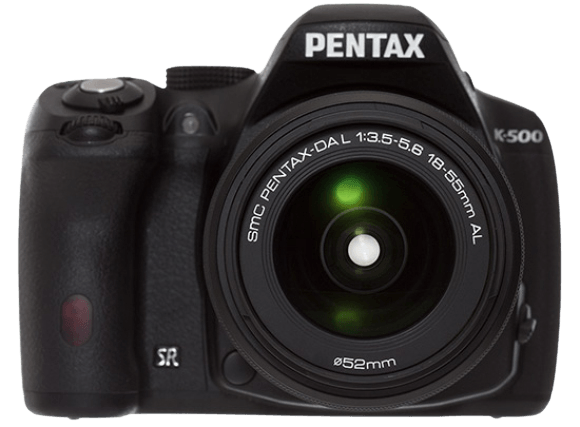Pentax K-500 Specs and Scores

The Pentax K-500 receives a score of 54 out of 100, a modest rating for this DSLR camera. Launched in 2013 with a price tag of $600, it has been available for quite some time. The camera measures 130 x 97 x 71mm and weighs 646g (1.42lbs), making it a decent size for a DSLR. Considering its age, the K-500 still holds its ground in today’s market, offering satisfactory specifications for those seeking a reliable camera.
Pentax K-500 Overview and Optics
The optics of the Pentax K-500 received a score of 62 out of 100. The camera has 16.28 megapixels, a shooting speed of 6 frames per second, and a CMOS sensor. Additionally, the camera is equipped with a Prime M processor, a DXOMARK sensor score of 79, and an APS-C sensor size. The Pentax K-500 also features a Pentax KAF lens mount, image stabilization, and a 3:2 aspect ratio.
In the current market, the Pentax K-500’s optics specifications are somewhat average. The 16.28 megapixels and 6 FPS shooting speed provide decent image quality and performance, but they may not stand out among other cameras with higher megapixel counts or faster shooting speeds. The CMOS sensor, Prime M processor, and 79 DXOMARK sensor score contribute to the camera’s overall image quality, but may not be exceptional compared to other models available.
The Pentax K-500’s optics specifications are satisfactory for casual photographers and those on a budget. The camera offers a reliable set of features, including its APS-C sensor size, Pentax KAF lens mount, image stabilization, and 3:2 aspect ratio. While it may not be a top choice for professionals or enthusiasts, the Pentax K-500’s optics provide a solid foundation for capturing quality images.
Pentax K-500 Video Performance
The Pentax K-500 receives a video score of 57 out of 100. This camera’s maximum video resolution is Full HD with dimensions of 1920 x 1080, allowing users to capture high-quality footage. The maximum video frame rate is 30fps, which is standard for most DSLRs and mirrorless cameras in today’s market.
This camera also features built-in time-lapse functionality, providing an added creative option for videographers. However, considering the rapid advancements in video technology, the K-500’s capabilities may not be as competitive as other cameras available today. Many cameras now offer 4K resolution and higher frame rates, surpassing the K-500’s video performance.
Despite its average video performance, the Pentax K-500 remains a reliable option for those seeking a camera with decent video capabilities and additional features such as time-lapse functionality.
Pentax K-500 Features and Benefits
The Pentax K-500 received a feature score of 41 out of 100. This score reflects the camera’s capabilities and functionality in relation to other models available in the market. The K-500 has a screen size of 3 inches with a resolution of 921,000 dots. However, it lacks a touchscreen and flip screen, which are desirable features in modern cameras.
Additionally, the K-500 does not include GPS or Bluetooth capabilities. It does have WiFi connectivity, which is a valuable feature for transferring images and controlling the camera remotely. Considering these specifications, the Pentax K-500 offers some useful features but falls short in comparison to other cameras in today’s market.
The Pentax K-500, despite its low feature score, remains a functional camera for certain users. However, those seeking more advanced features may want to explore other options available in the market.
Pentax K-500 Storage and Battery
The Pentax K-500 scores 32/100 in storage and battery. It has one memory card slot, accepting SD, SDHC, and SDXC cards. The camera’s battery life lasts for 710 shots, powered by 4 AA batteries. However, it lacks USB charging capabilities.
In today’s market, the Pentax K-500’s storage and battery specifications fall short compared to competitors. Most modern cameras offer more memory card slots and advanced battery options, such as rechargeable lithium-ion batteries and USB charging. The reliance on AA batteries is outdated and inconvenient for users.
The Pentax K-500’s low score in storage and battery reveals its limitations in these areas. Potential buyers should consider these drawbacks when evaluating the camera against current market offerings.
